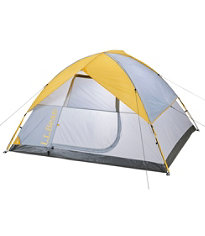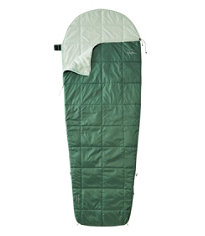(DESCRIPTION)
[00:00:00.00] Nate addresses us from a campsite. There is an L.L. Bean tent set up as well as the kitchen area in the background. Nate has short dark hair and is wearing a blue hat and an orange jacket.
(SPEECH)
[00:00:00.05] Hey, camp cooks. I'm Nate. And today, I'm here to show you the five things you'll need for your camp kitchen in order to set up, pack up, cook up, and clean up memorable camping meals, as well as to share just a couple extra tips to help make your next meal under the stars a five-star experience.
(DESCRIPTION)
[00:00:15.96] Text: one, clean water. Nate leans on the camp stove.
(SPEECH)
[00:00:16.25] Now, even if you're at a campground with a supply of clean running water available nearby, you're probably going to want your own supply for your campsite. After all, who wants to walk all the way across the campground for water for your coffee before you've had your coffee.
(DESCRIPTION)
[00:00:29.00] Nate sits on the edge of a picnic table. There is a large jug that hangs over the edge of the table with a faucet at the end.
(SPEECH)
[00:00:29.15] I prefer a big jug like this that you can set right at the edge of your picnic table. You can fill it up with water on the way into the campground. And with a spigot like this, it's almost like having a faucet right at the campsite.
(DESCRIPTION)
[00:00:41.49] Nate fills up his water bottle and gives us a thumbs up. Text: two, food storage. Nate sits down on a large white cooler.
(SPEECH)
[00:00:42.77] The secret to a perfectly stocked campsite pantry is planning ahead. Now, before you head out, think about your meals carefully and figure out exactly what you need to bring. Remember, a cooler is not a fridge. So if you overpack, it doesn't just mean you'll run out of space. You could also end up dealing with a lot of spoiled food.
[00:01:00.88] Speaking of coolers, I like to store my food in two separate containers, a hard shell cooler for perishables and a plastic tote with a lid for other food.
(DESCRIPTION)
[00:01:10.57] There are two large transparent plastic totes full of food.
(SPEECH)
[00:01:10.80] I like to keep both these containers near the picnic table so I can get to the food easily during the day. I also try to keep the cooler in the shade so that it doesn't heat up too much on the inside.
(DESCRIPTION)
[00:01:19.99] Nate opens up the cooler and shows the contents of it.
(SPEECH)
[00:01:20.34] Now at night, these get locked up back in the car, just in case animals come sniffing around.
(DESCRIPTION)
[00:01:25.12] Text: three, stove and fuel. Nate stands beside a two burner blue camp stove.
(SPEECH)
[00:01:25.20] And over here is my camp stove. It's one of the most important things that you can bring to your camp kitchen. I personally prefer a two-burner stove like this one, so you can have a couple different things going at once, like boiling water for coffee at the same time as you're frying up bacon and eggs.
[00:01:38.79] And a little pro tip from me, I like to bring an extra prep table to extend your workspace.
(DESCRIPTION)
[00:01:43.97] There is a cutting board beside the camp stove.
(SPEECH)
[00:01:44.13] That way, the picnic table can stay open for people to play games, have snacks, et cetera, while you're working in the kitchen.
(DESCRIPTION)
[00:01:50.25] Text: four, cleanup station.
(SPEECH)
[00:01:50.88] This is my three-part campsite dishwashing setup. It's got a wash sink, a rinse sink, and a drying rack.
(DESCRIPTION)
[00:01:57.46] These three areas sit on top of a small table.
(SPEECH)
[00:01:57.75] You start by washing your dish off with biodegradable camp soap in the wash sink, then rinse your suds off in the rinse sink before leaving your dish to dry in the drying rack. You can also hang your dish in a mesh bag to save space.
[00:02:10.63] This is a griddle pan.
(DESCRIPTION)
[00:02:12.43] Nate lifts a small rectangular griddle pan off of the camp stove.
(SPEECH)
[00:02:12.72] Don't worry. Stove isn't on. This is a must pack item for me. It gives you a lot more real estate than a regular frying pan. And it's perfect for the number one camping breakfast food, Flapjacks.
(DESCRIPTION)
[00:02:24.58] Text: cookware and dinnerware. Nate kneels in front of an L.L. Bean storage cabinet.
(SPEECH)
[00:02:25.02] OK. So plastic or silicone dishware is lightweight and easy to clean. It's also frequently included in basic campsite cooking and mess kits. Personally, I prefer enamelware, which is also lightweight, but feels a little bit sturdier. Don't forget cups and mugs for your drinks as well. Your camp cookware kit might not include these and no matter how nice your plates are, they're hard to drink coffee out of.
[00:02:48.55] And this isn't really dinnerware, but I've cooked in the dark way too many times. And I don't want you to make the same mistake. So be sure to bring a camp lantern for when the sun goes down. The layout of your campsite is really important. Can we go to an overhead shot?
(DESCRIPTION)
[00:03:01.74] The campsite down below. Each object is highlighted as Nate mentions it.
(SPEECH)
[00:03:01.97] I like to keep my water and cooler near the table. The dishwashing setup and stove at the edge of the campsite and my extra fuel, cookware, and dinnerware in their own area. This layout forms a triangle that makes cooking at camp a lot more efficient.
[00:03:16.44] Your standard camp cookware set is going to include all of your basics, and, usually, comes in a nesting compact container like this.
(DESCRIPTION)
[00:03:24.34] Nate removes a bungee cord off a metal pot full of camp cookware.
(SPEECH)
[00:03:24.47] This one comes in a larger pot and includes a pot holder, bowls, and utensils. It's got plates in here as well, and also has a collapsible, compact frying pan with a detachable handle. There you go.
[00:03:40.38] It also has a trivet for when your pot comes hot off the stove. Basically, everything you might need to whip up a dish and a couple sides on your camp stove.
[00:03:49.50] Are there any essentials for the camp kitchen that we missed? Drop a comment down below and let us know. And don't forget to like and subscribe for more tips and tricks to make the most out of your time outdoors at the campsite and beyond.
[00:04:01.20] But for now, your table is ready. Bon appétit!
(DESCRIPTION)
[00:04:06.50] The camp stove is beside the storage container which is beside the small table with the cleaning station. The woods are in the background.
Shop Camping Essentials
Dining outside at a campsite is one of the best (and most delicious) ways to spend time outdoors. Here are five things you need for your camp kitchen so your next under-the-stars meal is a five-star experience.
1. Water
Even if you're at a campground with clean running water available nearby, you're going to want a good supply right at your campsite. A large jug with a spigot that you can put right on your picnic table is a great solution; fill it up on your way into the campground and it’s almost like having a faucet at your campsite.
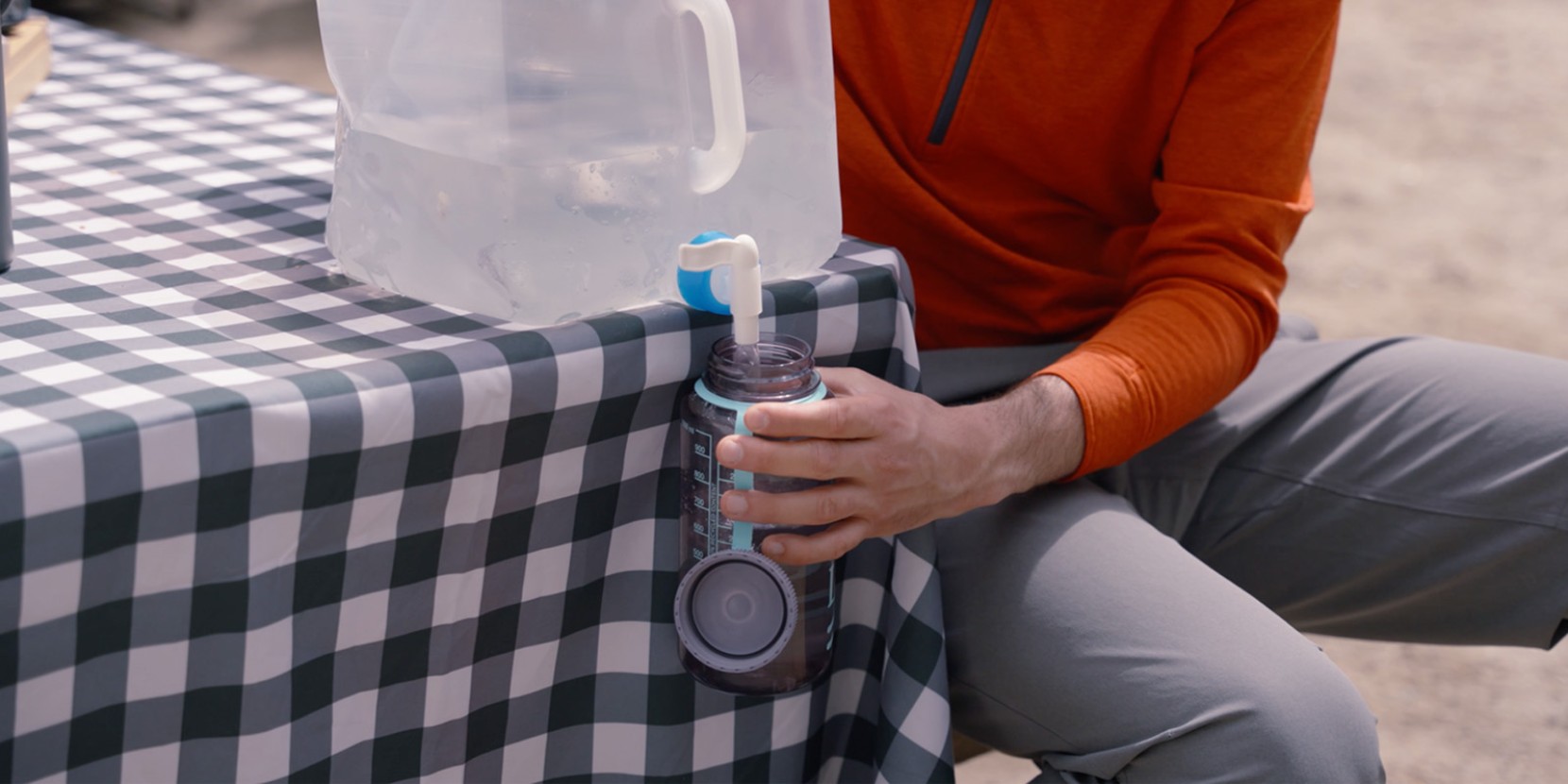
2. Food Storage
A perfectly stocked campsite pantry is all about planning ahead. Before you pack food, plan out your meals and think about what you need; nothing more, nothing less. A cooler isn’t a fridge, and packing too much means you won’t just run out of space, you’ll also end up with spoiled food.
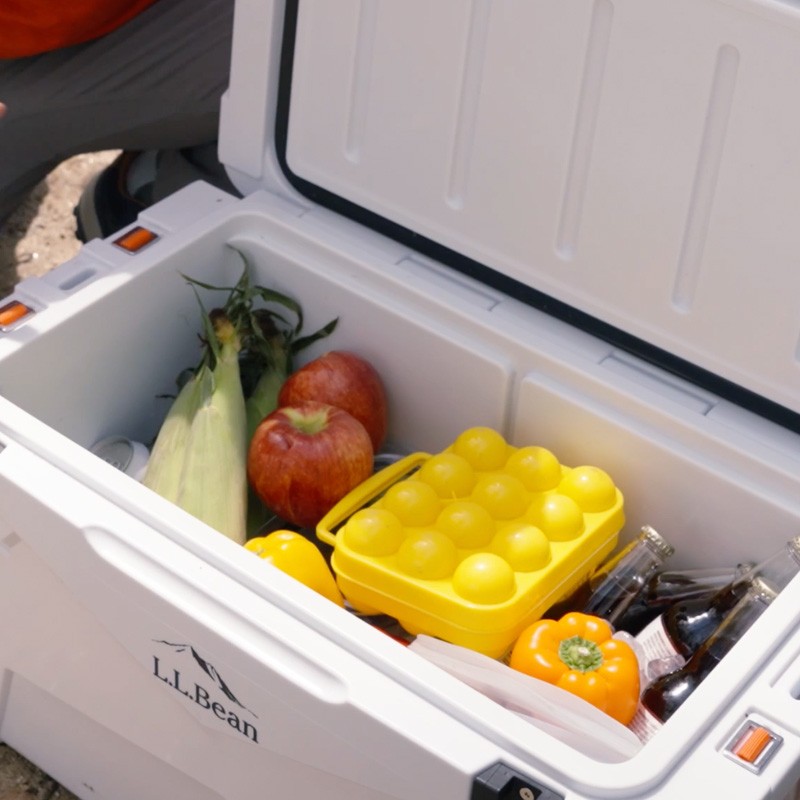
Hard-shell cooler

Plastic tote with a lid
To keep things organized and easy to carry, you can split your food between two containers: a hard-shell cooler for perishables, and a plastic tote with a lid for other food. Pick a shady spot for the cooler if you can, and remember to put all your food back in your car at night in case animals start sniffing around.
3. Stove & Fuel
Whether you’re spending a single night or a whole week at the campsite, your cooking setup is going to determine what you’ll be able to whip up – and how.
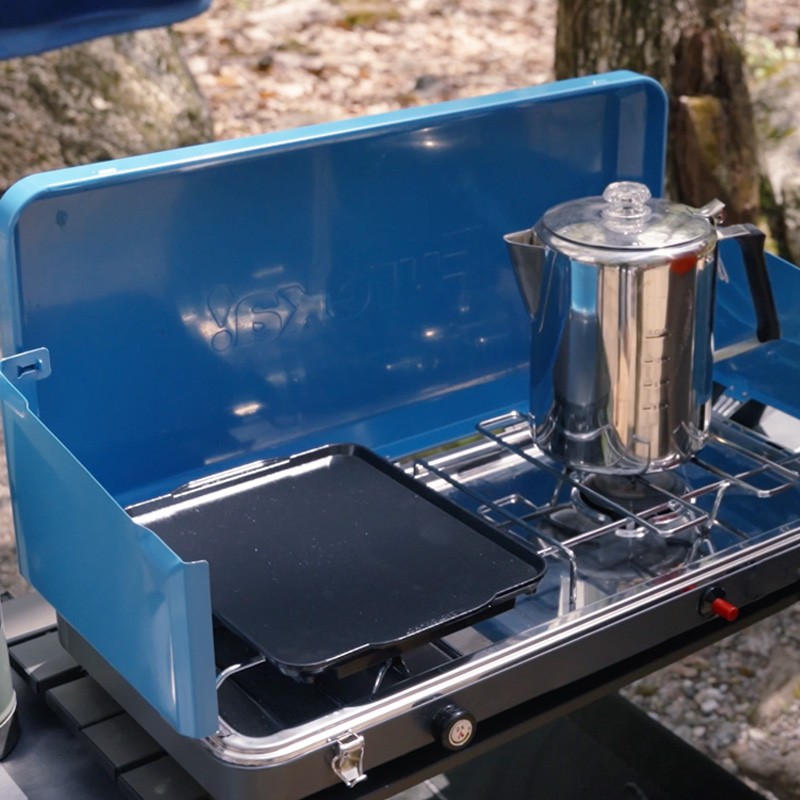
Camp Stove
For the even heating and quick, fine control you need when cooking, you can’t beat a camp stove. A two-burner stove is ideal, so you can do a couple of things at once, like boil water for coffee while you’re also frying up eggs and bacon.

Extra Prep Table
You could prepare everything right on your stove or table, but an extra prep table next to your picnic table can keep all your supplies out of the way while you’re cooking, so your campers can use the table for games or snacks while they’re waiting for the meal to be served.
4. Cleanup
Cleanup is a breeze with a simple 3-part dishwashing system: a washing sink, a rinsing sink, and a drying rack. Wash your dishes with biodegradable soap in the washing sink, rinse off the suds in the rinsing sink, and then put them on your drying rack to dry.
When it’s time to clean up your system, just combine your wash and rinse sink (you can filter out food scraps from your wash bucket with cheesecloth or mesh) and pour your graywater out in the campground’s designated area. Don’t pour it on the ground at your campsite.
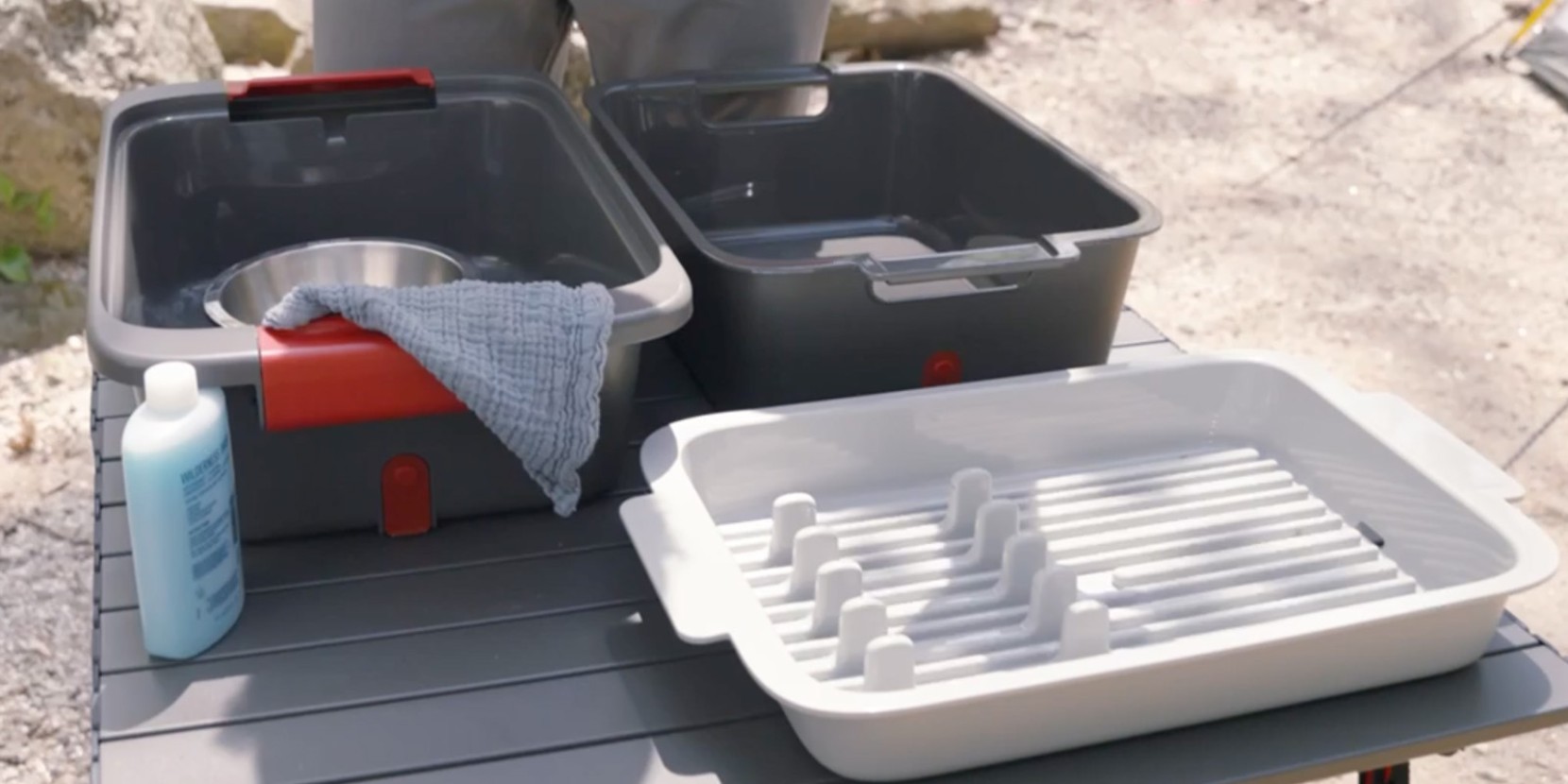
5. Cookware & Dinnerware
Your standard camp cookware set is usually going to include all the basics, often in one nesting, compact container. Whether you’re bringing a set or collecting cookware from your kitchen, you’ll probably want a pot, a pan, utensils and bowls.
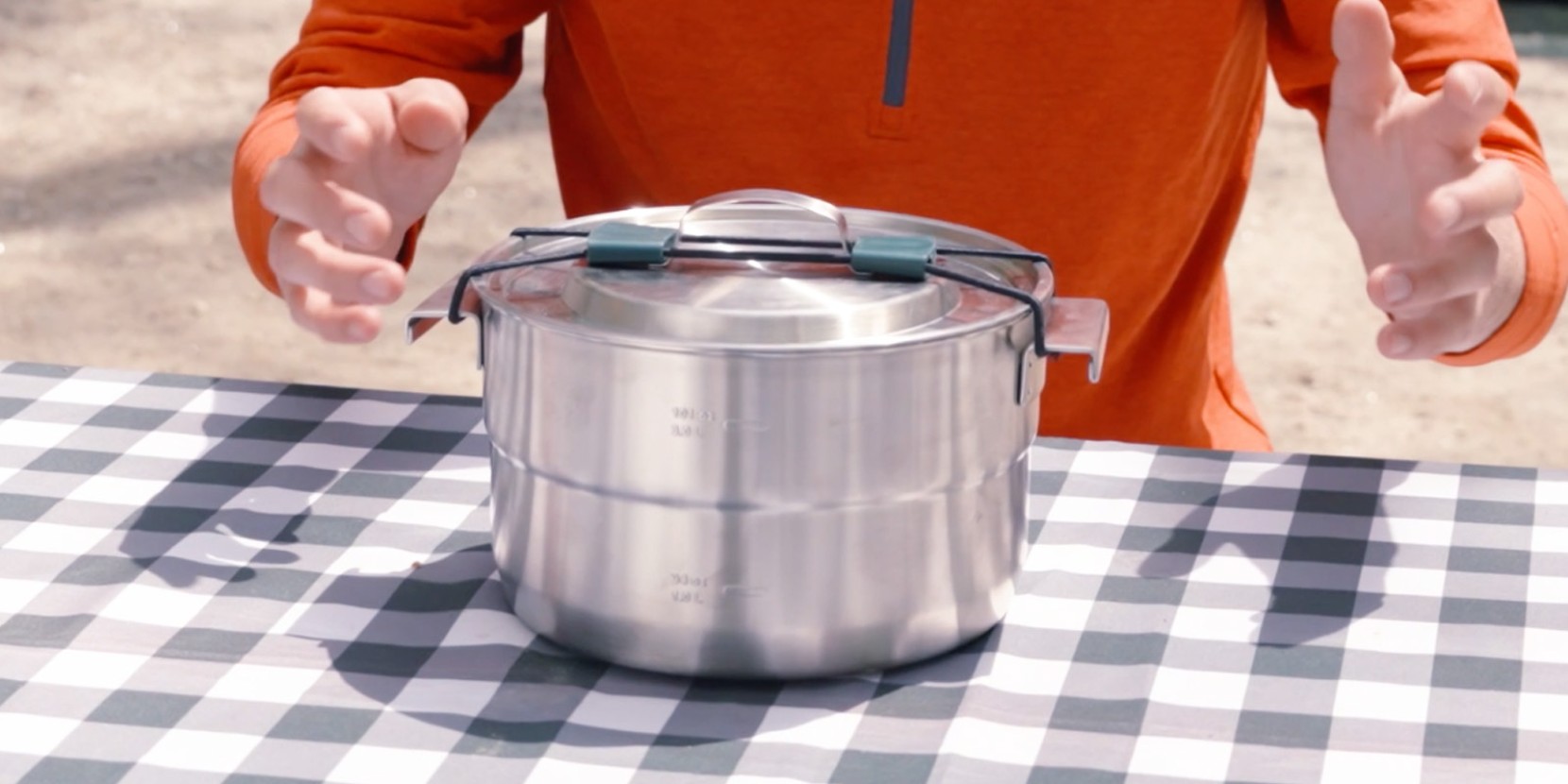
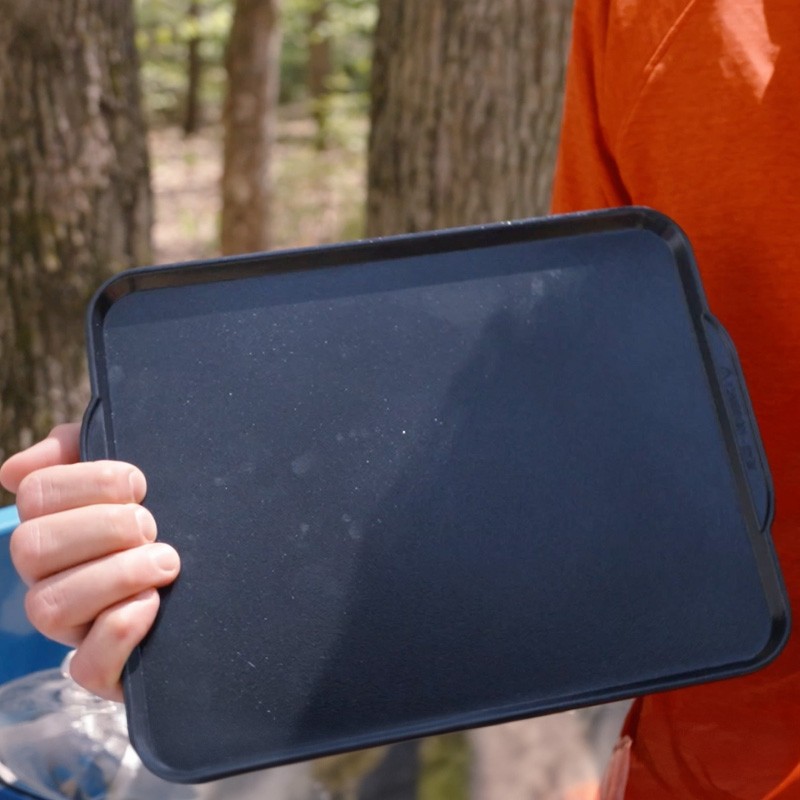
Griddle Pan
Extra accessories can make things easier, depending on what you’re cooking and who you’re cooking for. A portable griddle or griddle pan, for example, gives you a lot more real estate than a regular pan for feeding a group; and a kettle can feel more stable for boiling water than a pot.
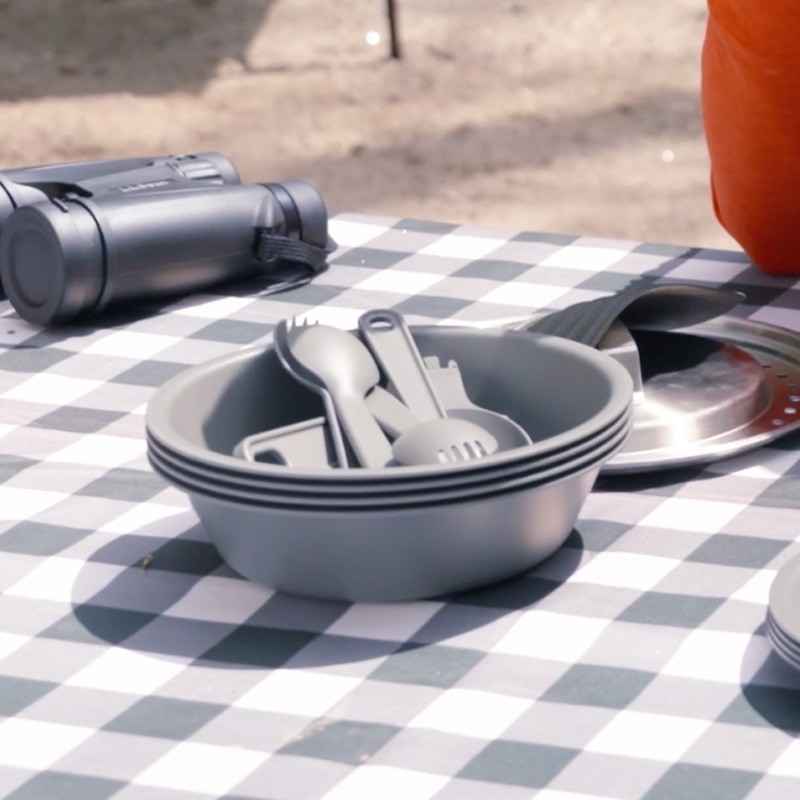
Dinnerware
For dinnerware, plastic or silicone options are lightweight and easy to clean, and often included in a camp cookware or mess kit. Enamel is also a camping classic; it’s lightweight but feels a little bit sturdier.
Setting up your camp kitchen with these elements means you can focus less on the prep and more on chowing down. And once you’ve got your kitchen taken care of, don’t forget to check off everything else you need for a camping trip, from furniture and lighting to tents, shelters and sleeping bags.
Bon appétit!
